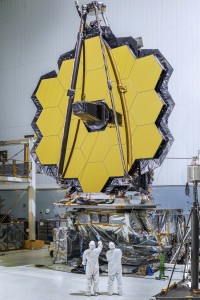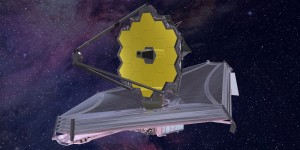The James Webb Space Telescope
The Hubble Space Telescope’s successor, known as the James Webb Space Telescope, is set to launch in March of 2021. The Webb Telescope will be stronger than its predecessor, but how much stronger? According to a study by the University of Washington, one of the primary focuses of this telescope is to analyze the TRAPPIST-1 solar system, which is only 39 lightyears away. The study reports the Webb Telescope will be able to detect biosignatures in the atmospheres of the planets in the system.

According to NASA, Webb will help astronomers make new discoveries about the early universe, what happens to galaxies over time, the life cycle of a star, and other planets in other solar systems. Astronomers have made great strides since the Hubble first started taking photos nearly three decades ago, but there is still a lot that we don’t know. Hopefully, the Webb will change that.
What makes the Webb different than the Hubble is the Webb will be able to detect light wavelengths up to the mid-infrared range. The Webb will have the clarity of the Hubble but also have infrared capabilities that allow it to detect things that we might not know are there otherwise.
Bodies of mass give off radiation. Stars give off visible light radiation that we can see, which is why they light up the night sky. They also give off ultraviolet light, known as UV in the context of our sun. They also give off infrared radiation, which we as humans perceive as heat. They also give off microwaves and radio waves, which are imperceptible to us in our everyday lives on Earth, but astronomers listen very carefully for.
Because of a phenomenon called redshift, light is stretched as the universe expands. Redshifting is when electromagnetic radiation from an object undergoes an increase in wavelength. This can happen for a few reasons, but it happens to things in space because the universe is always expanding. Things are always moving farther and farther away from each other, even if their relative distances are unchanged. This includes electromagnetic waves. As the universe expands, the empty space between things stretches, and the waves themselves stretch, which changes the frequency of them.
Because we are so far away in space from the things we would like to study, we often can’t see them. The visible light rays are stretched out by redshift, and by the time that they get here for us to see, they aren’t visible light rays anymore, they are infrared rays, and oftentimes other types of rays. This poses a problem for astronomers who cannot see heat or microwaves.

But we have technology that is capable of translating these infrared wavelengths into perceptible color, or at least into data that is stored on astronomical computers. This is what the Webb was designed for.
The ability to take photos of infrared wavelengths allows us to see things that we normally wouldn’t be able to see, such as young, forming protostars hidden in cloudy nebulas, and such as heat given off by aliens, should they exist somewhere. This insight into things we otherwise wouldn’t be able to detect is just one of the highlights of the James Webb Space Telescope.



